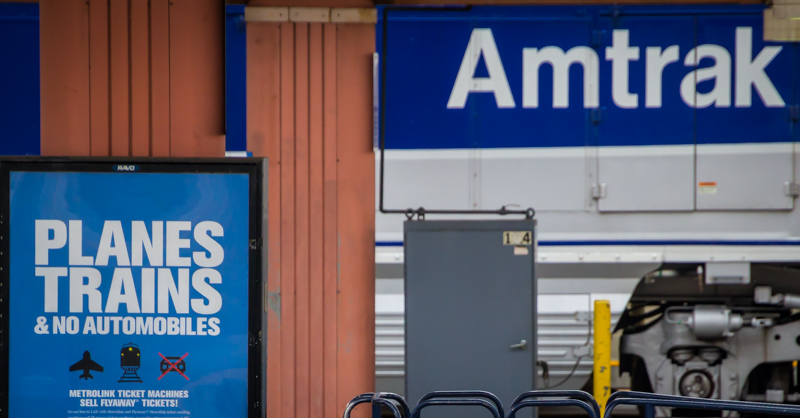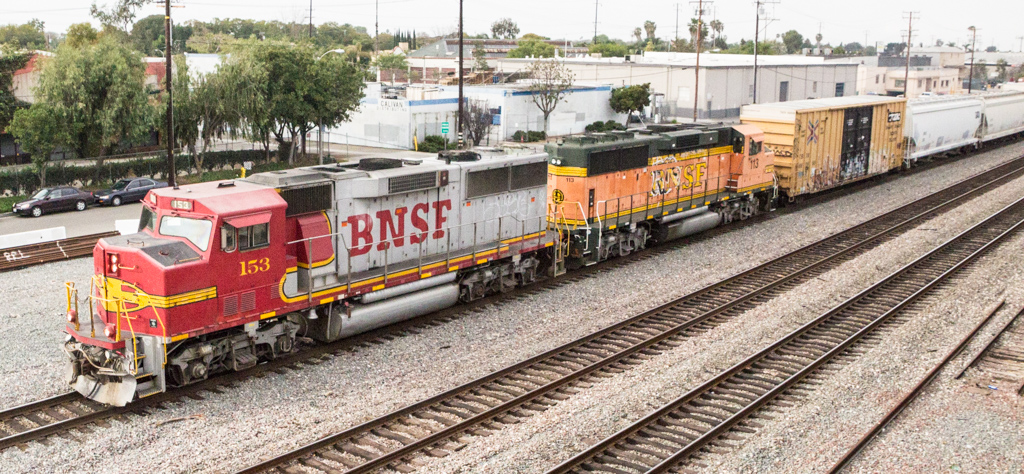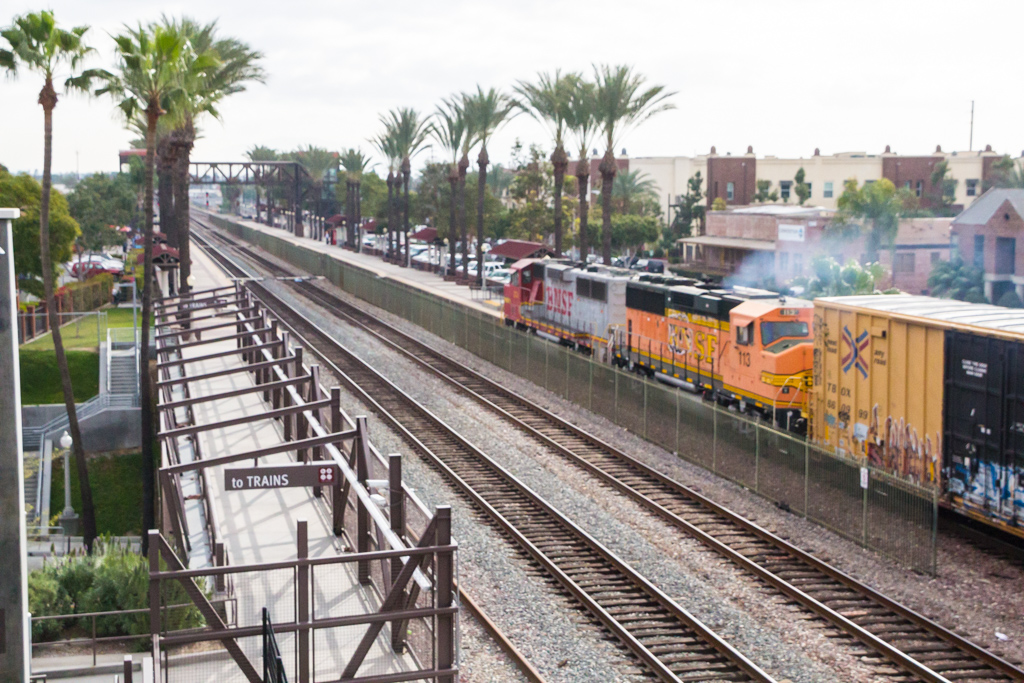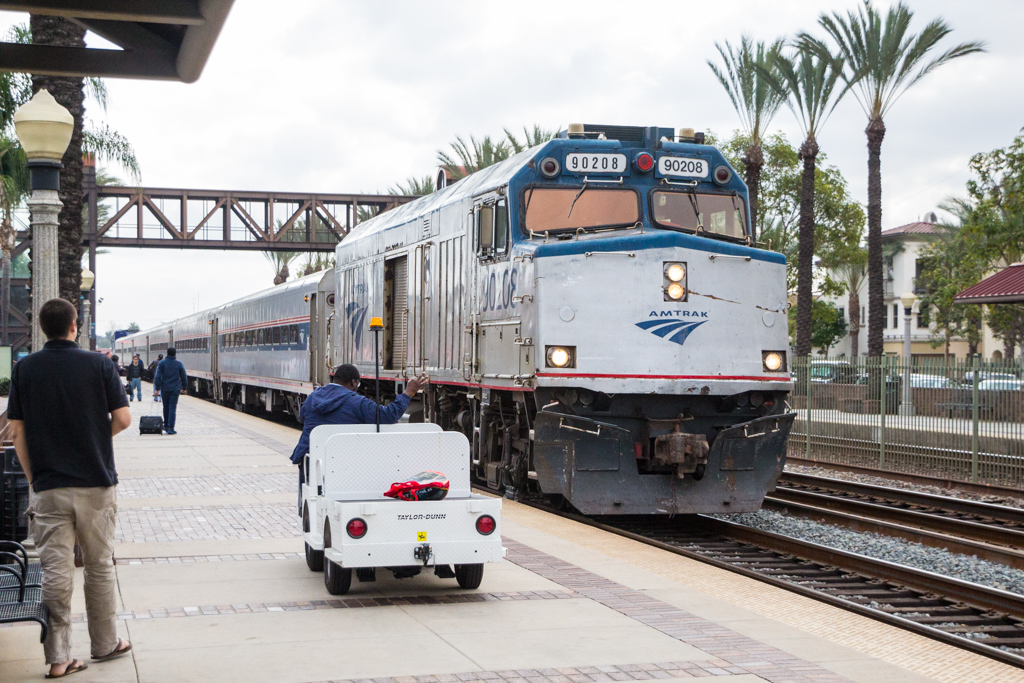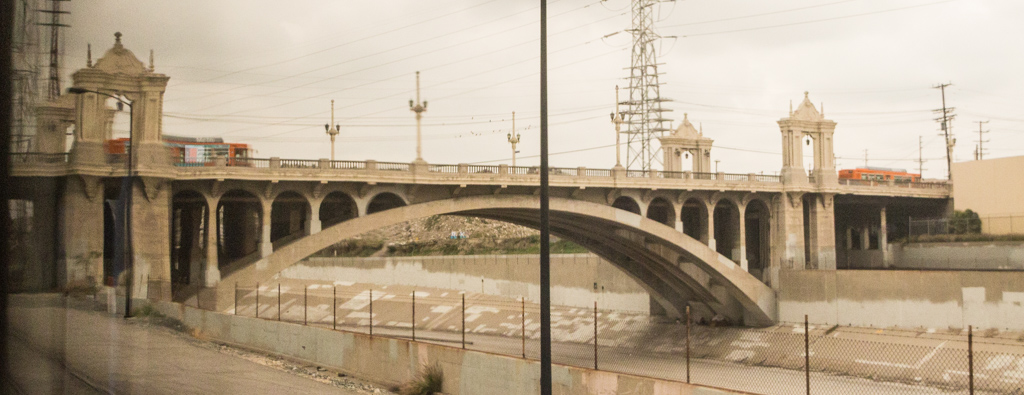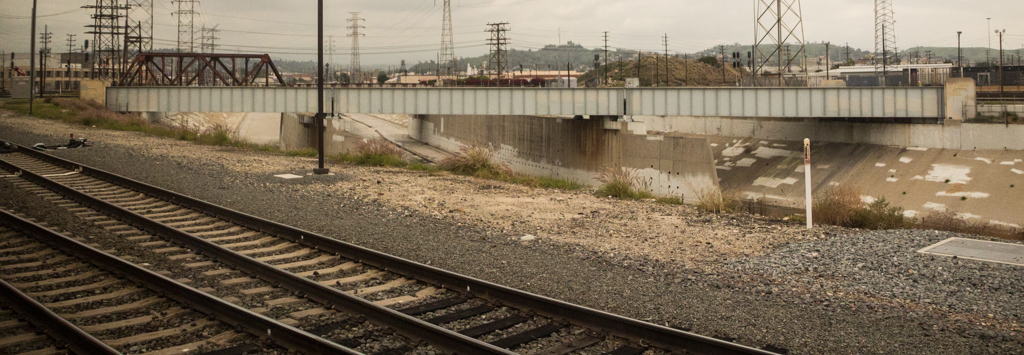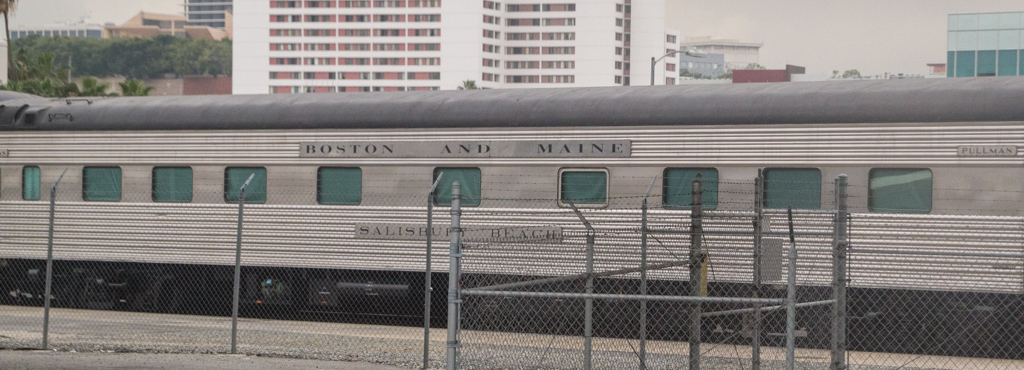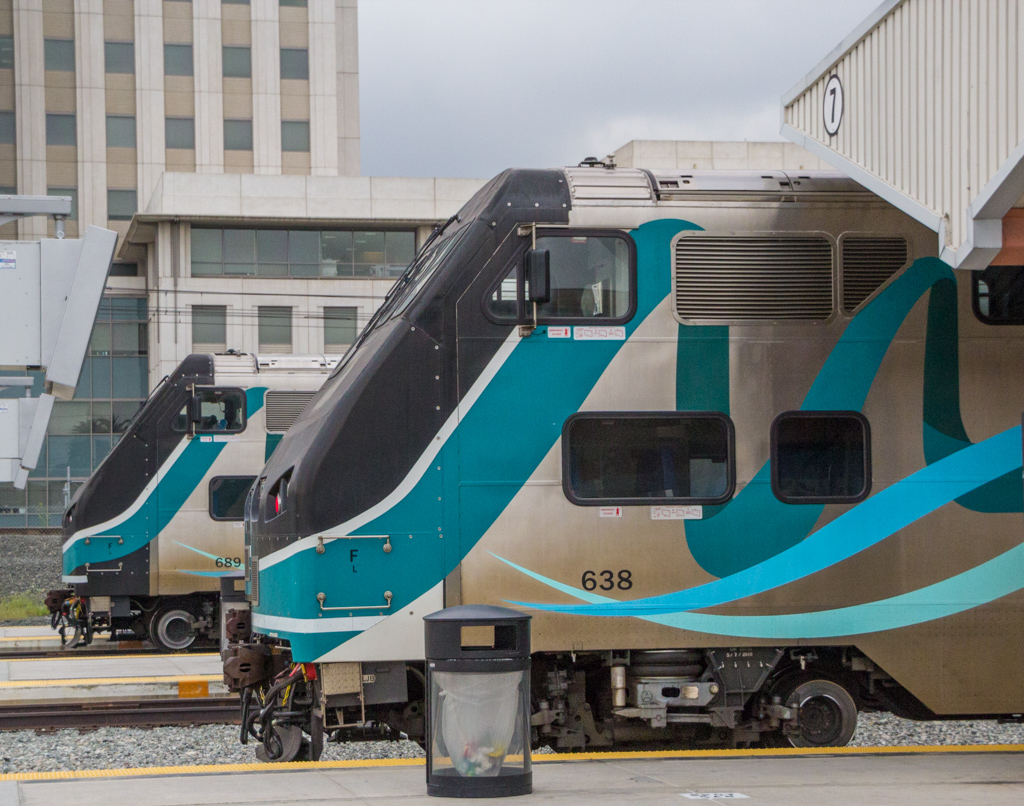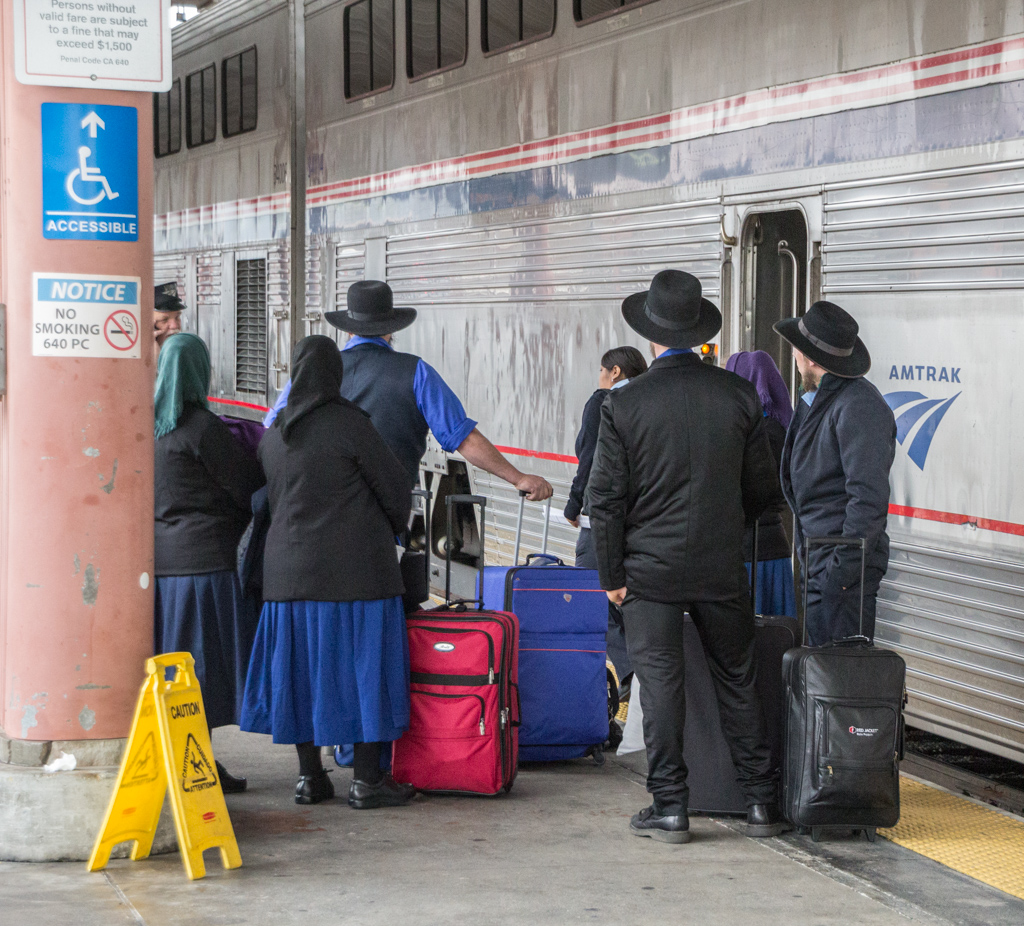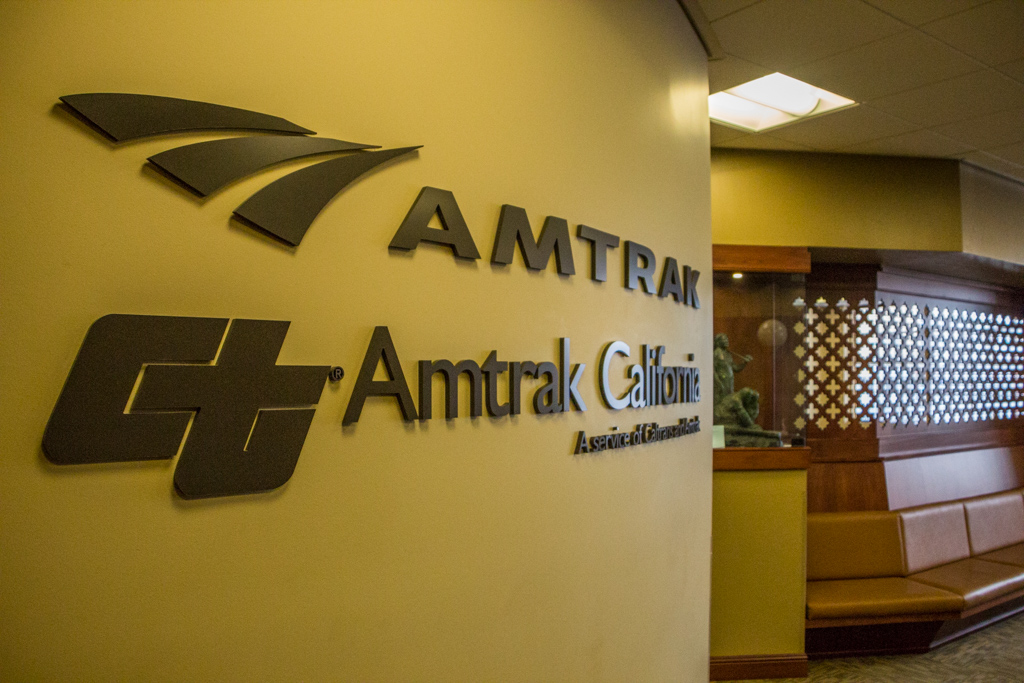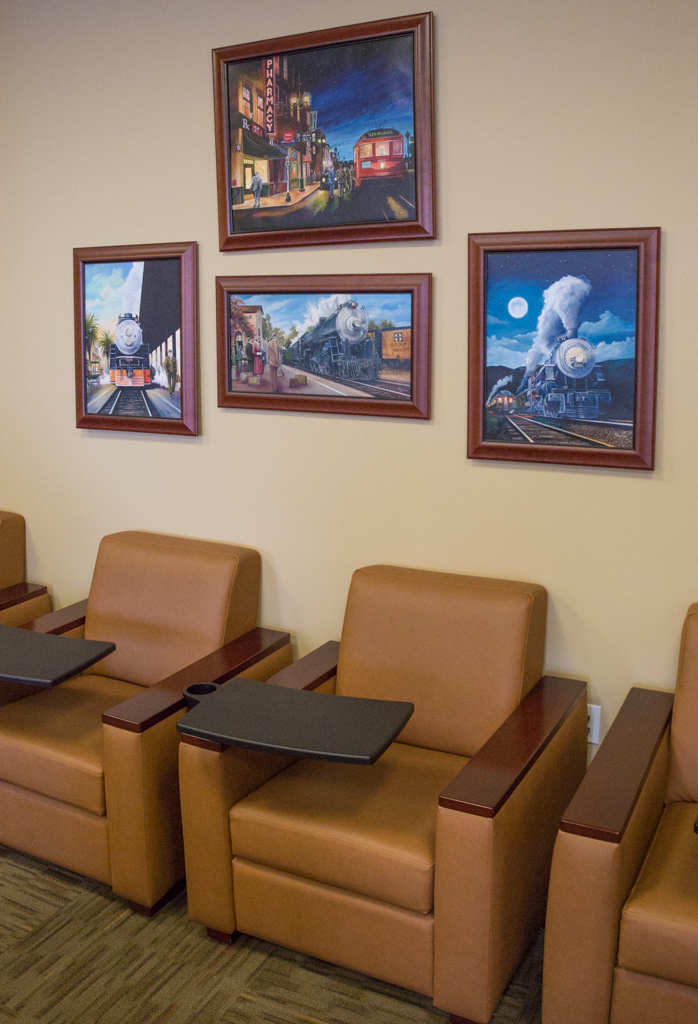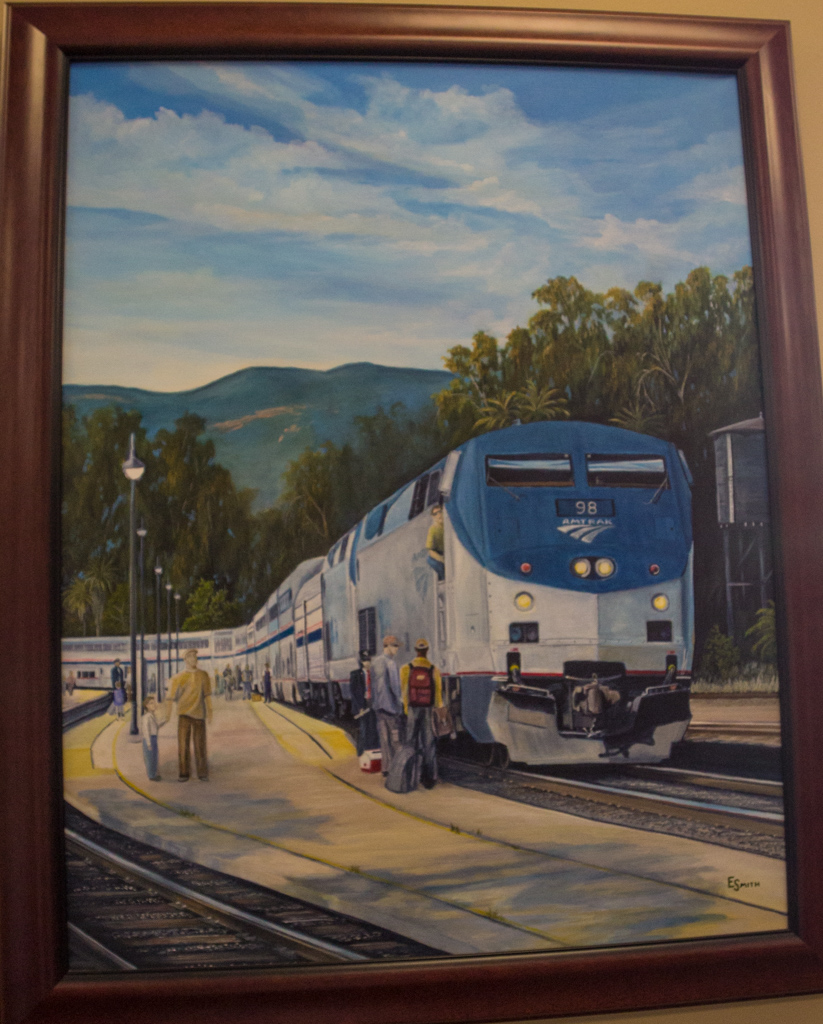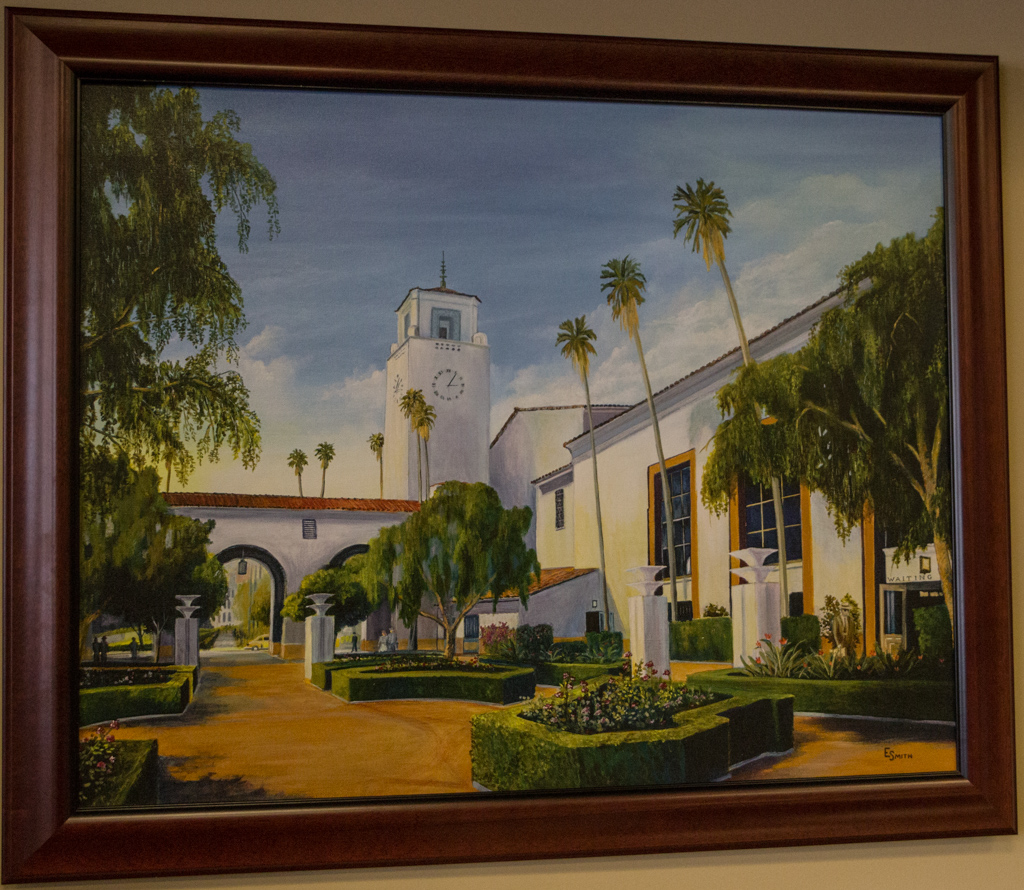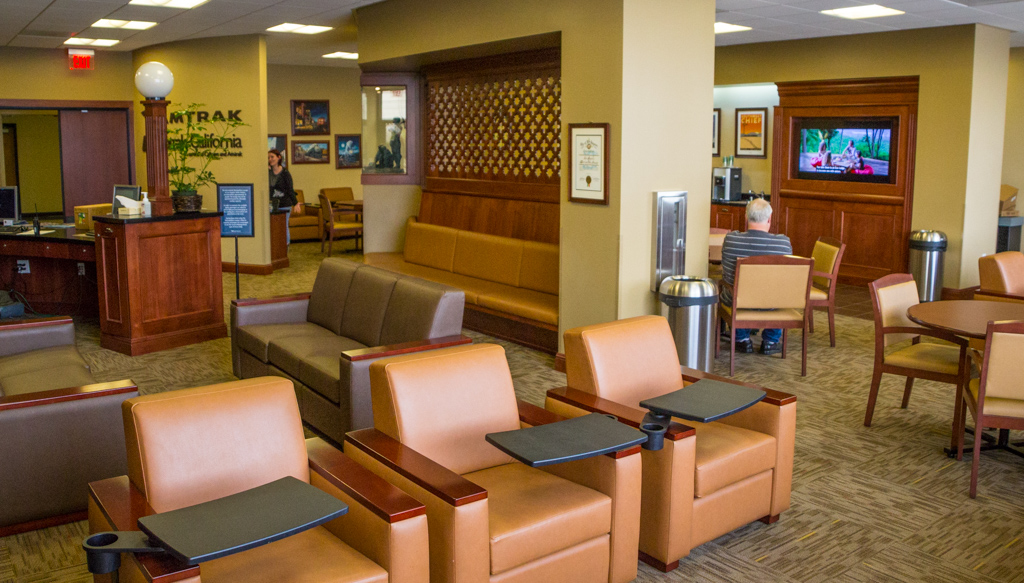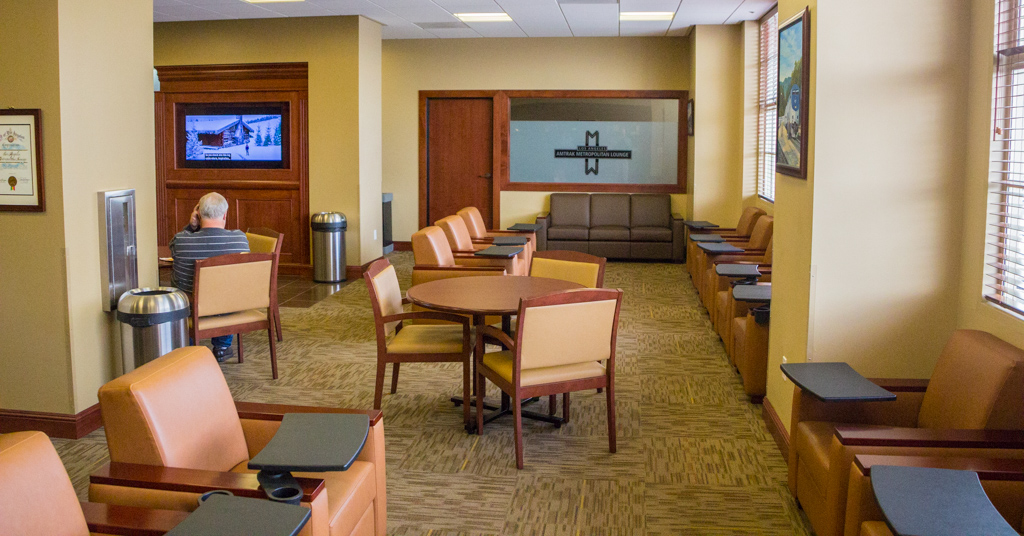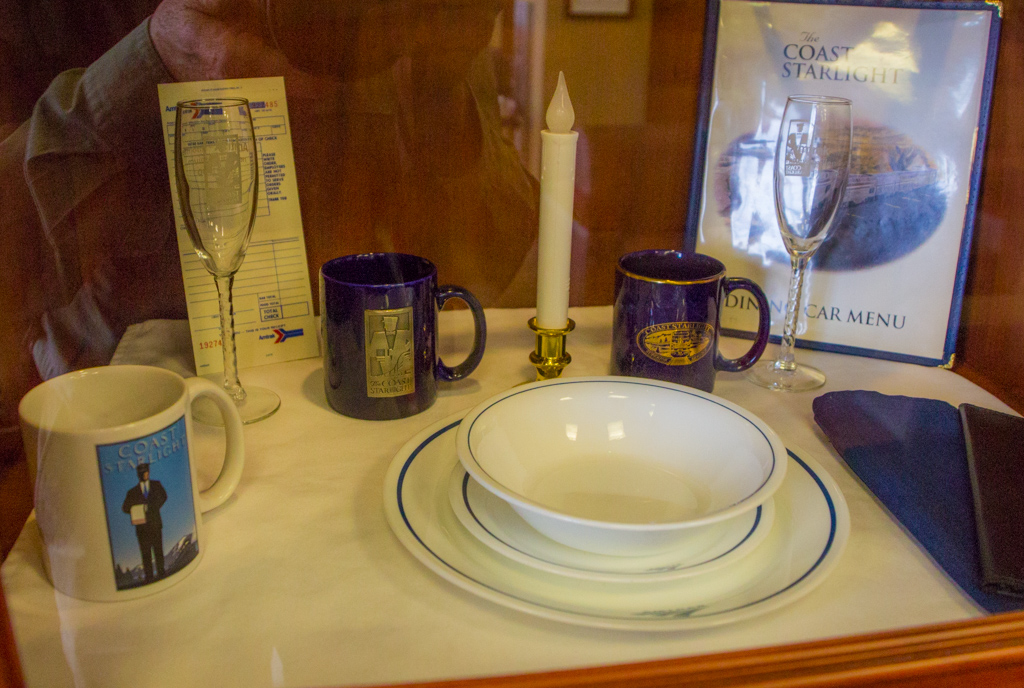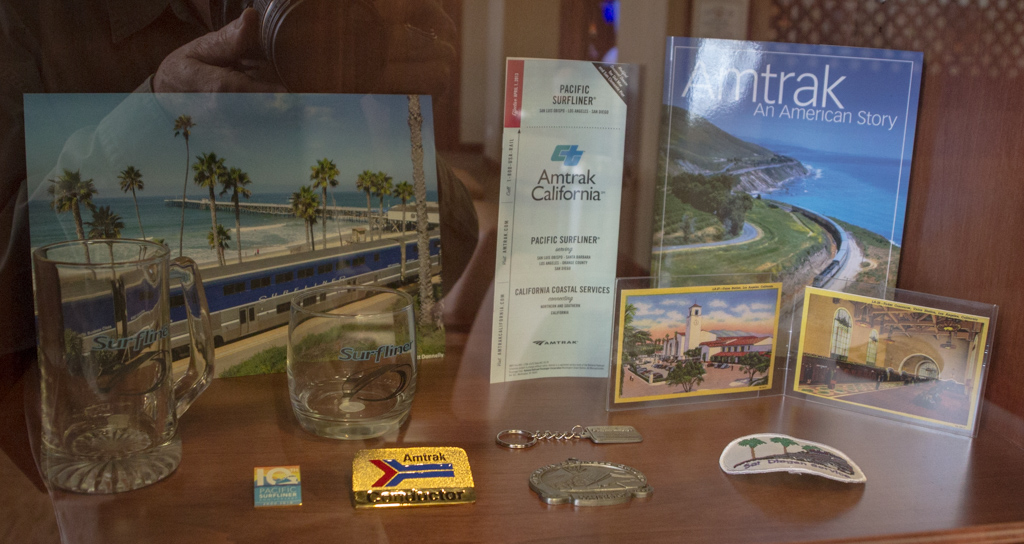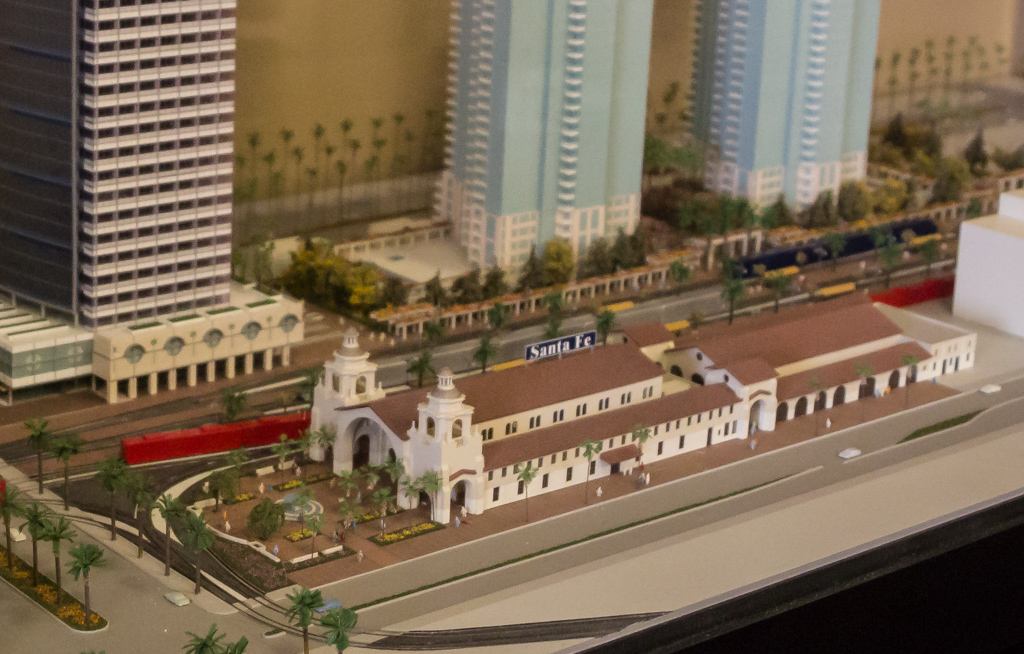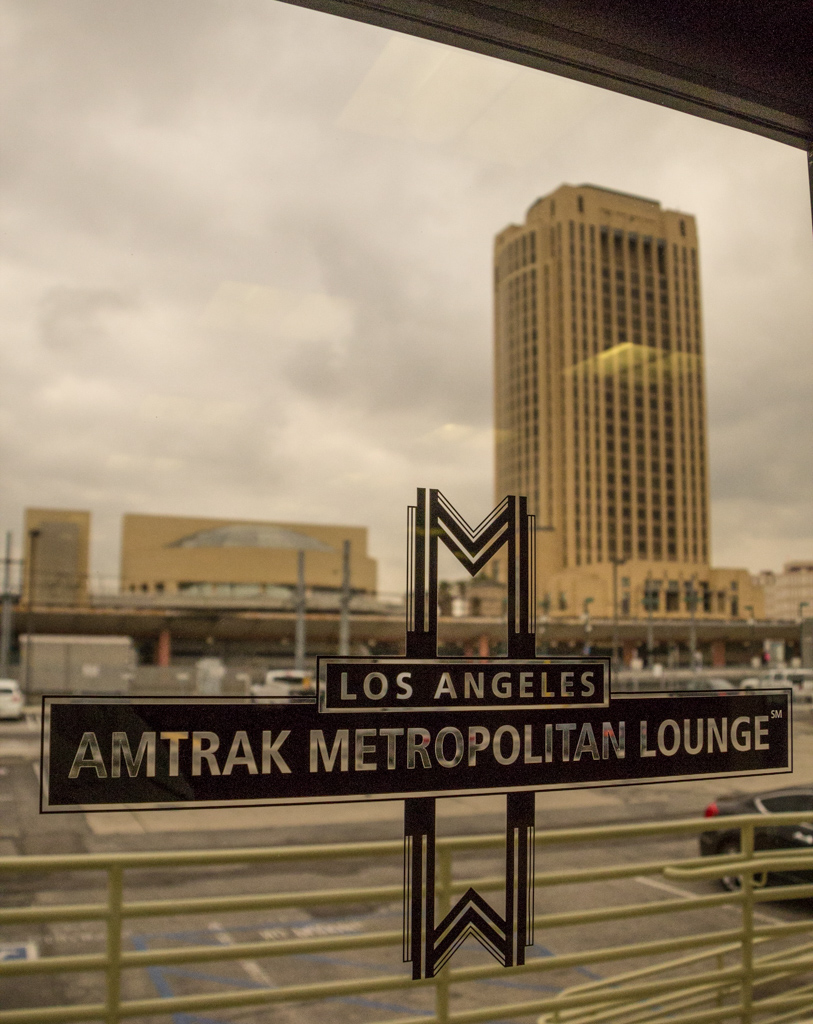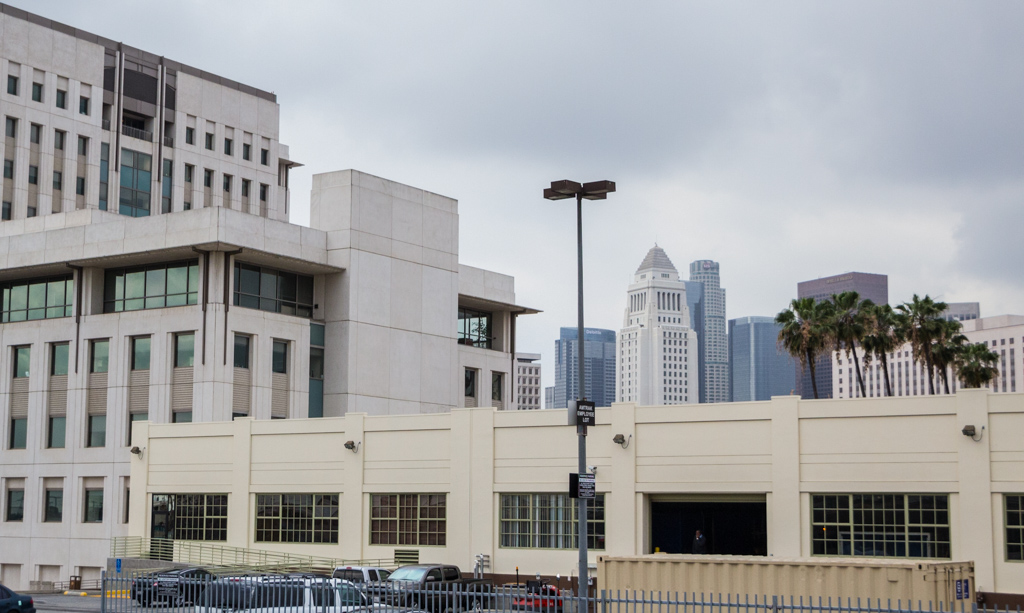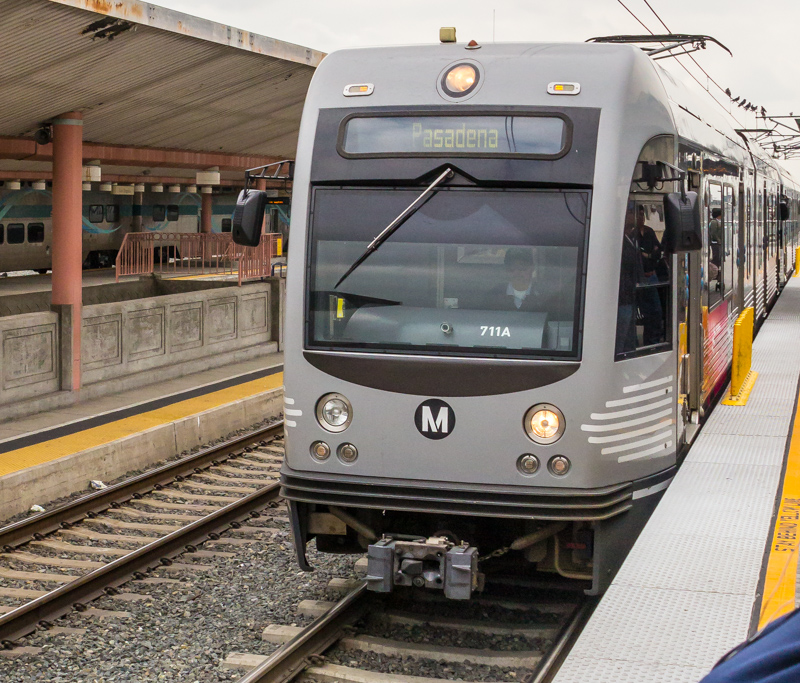 We added $1.75 to our TAP cards and boarded Metro for Pasadena
We added $1.75 to our TAP cards and boarded Metro for Pasadena
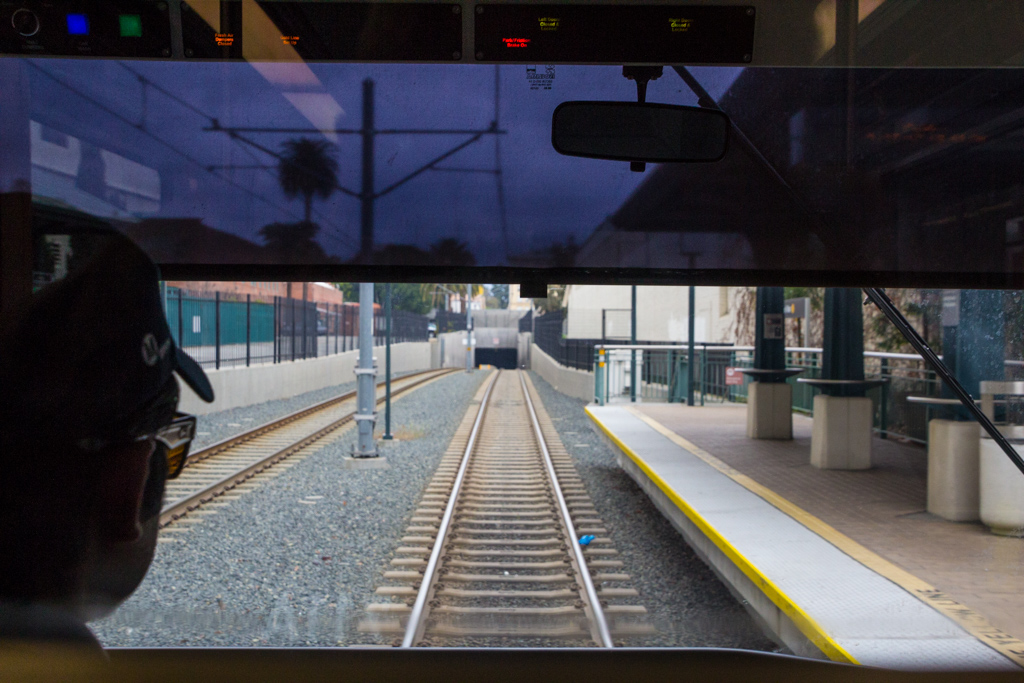 Since we were in the first car, as we stepped off at Del Mar
Station, I took an engineer's-view toward the tunnel ahead.
Since we were in the first car, as we stepped off at Del Mar
Station, I took an engineer's-view toward the tunnel ahead.
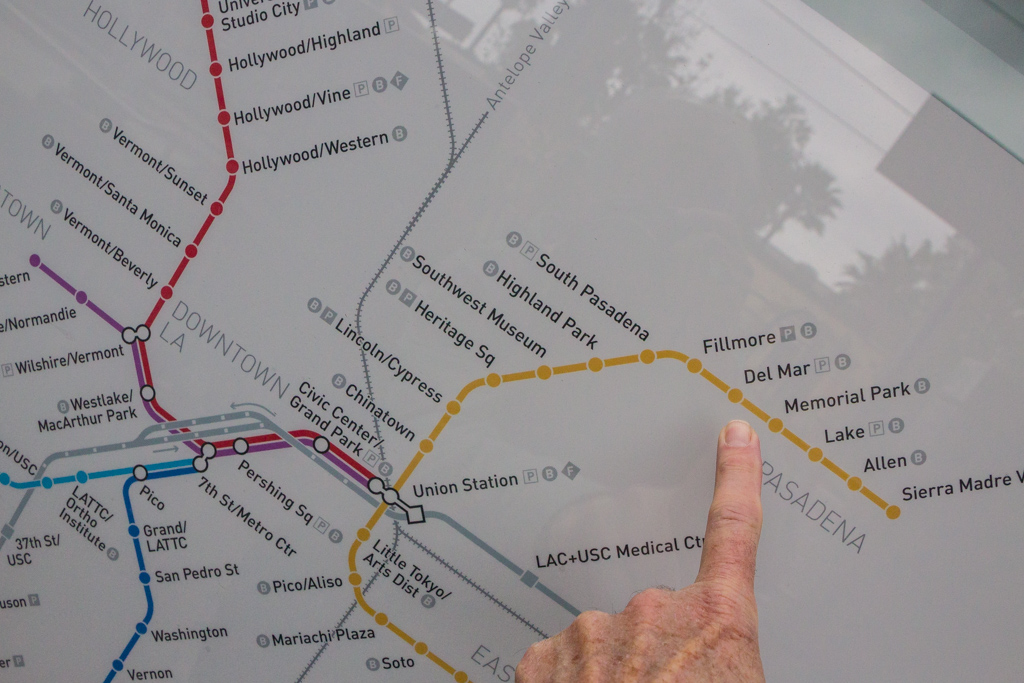 On the Del Mar platform is a map of the Metro System.
On the Del Mar platform is a map of the Metro System.
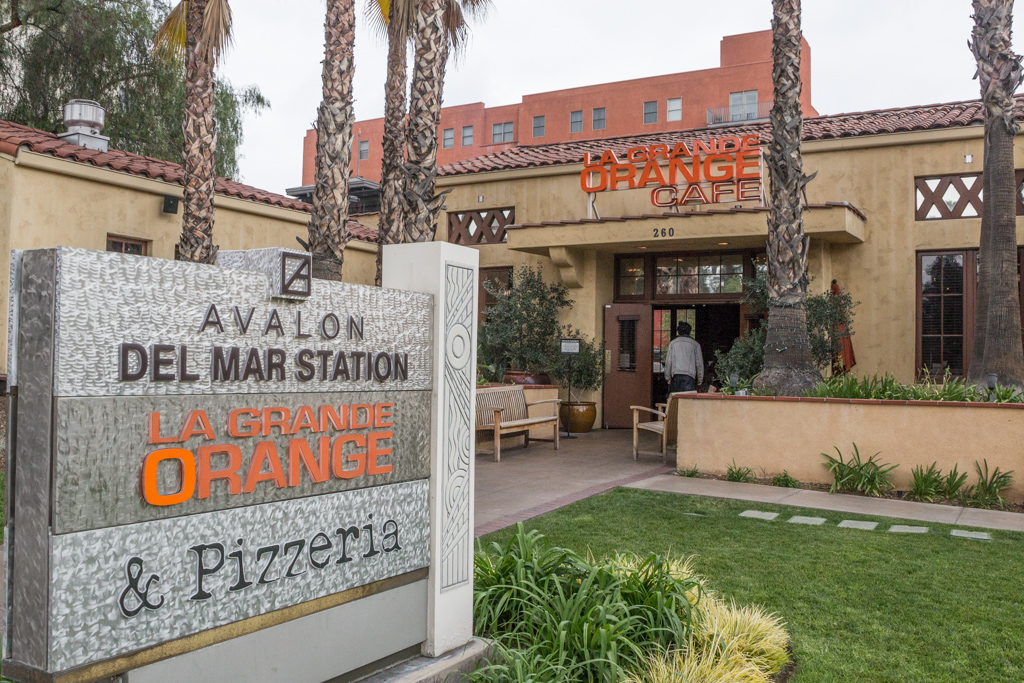 Our destination, the La Grande Orange Cafe (LGO). This is
the street entrance.
Our destination, the La Grande Orange Cafe (LGO). This is
the street entrance.
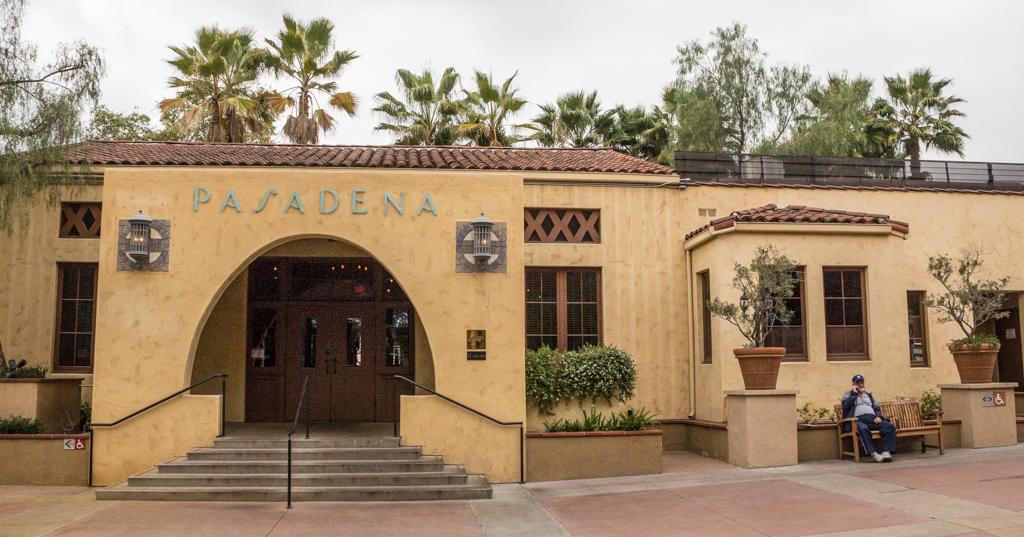 Metro Station side of LGO, an original Pasadena Depot.
Metro Station side of LGO, an original Pasadena Depot.
The Pasadena Depot became well
known by the many transcontinental passenger trains that it served.
Historically, up to 26 passenger trains went through Pasadena every
day. In order to avoid the media in Los Angeles, many celebrities chose
to use Pasadena as their main train station, bringing to it an ambiance
and legacy of the glamor of old Hollywood.
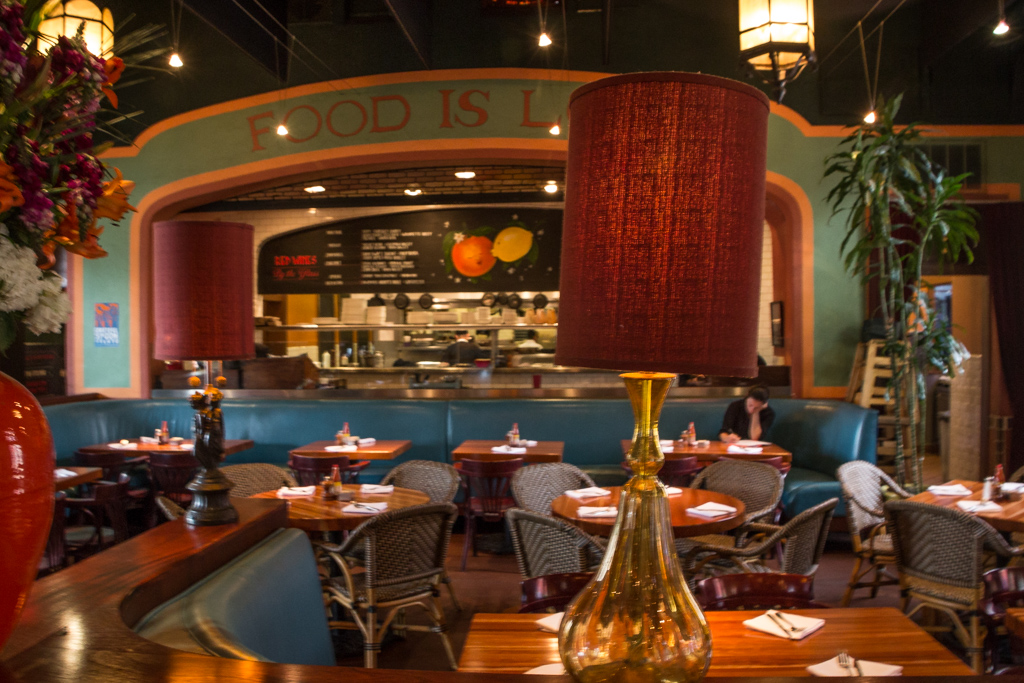
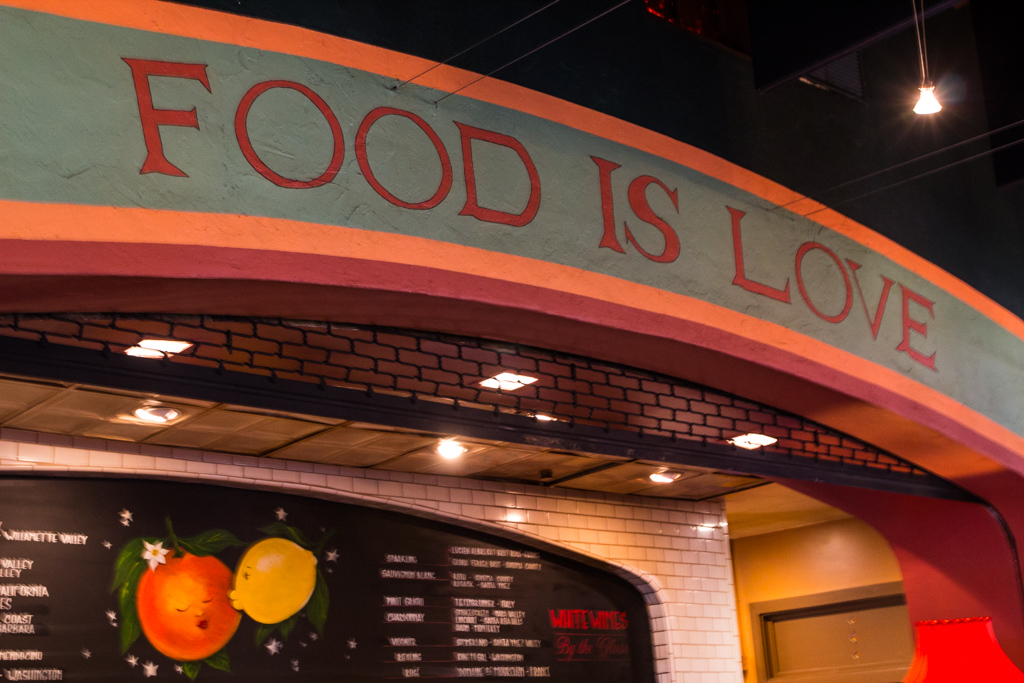
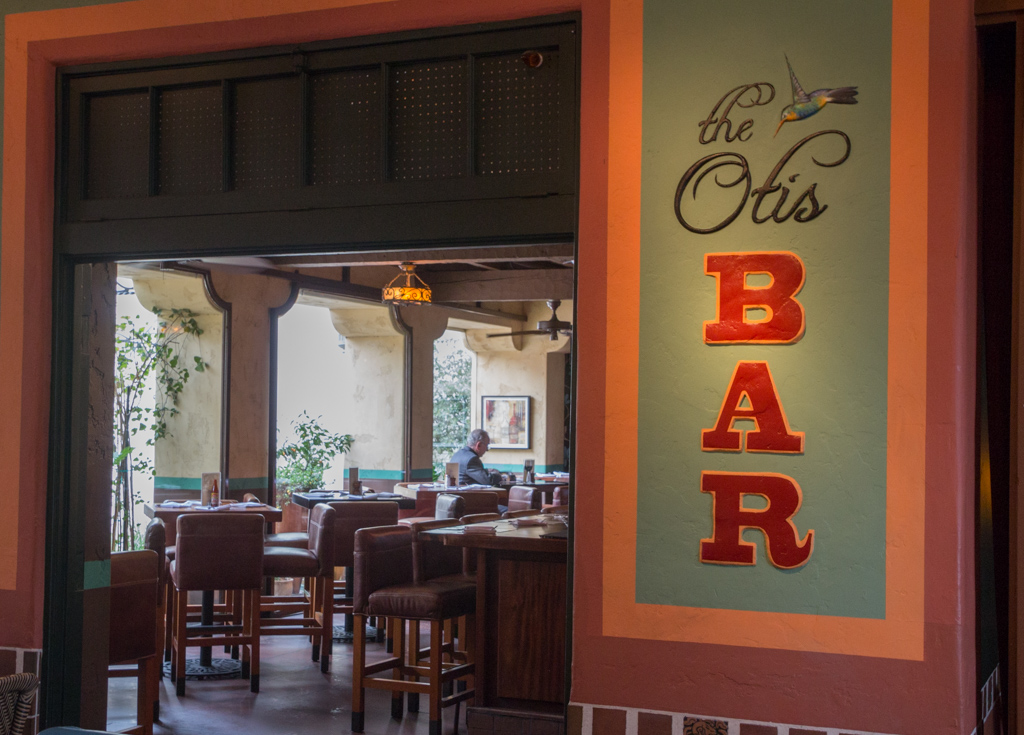
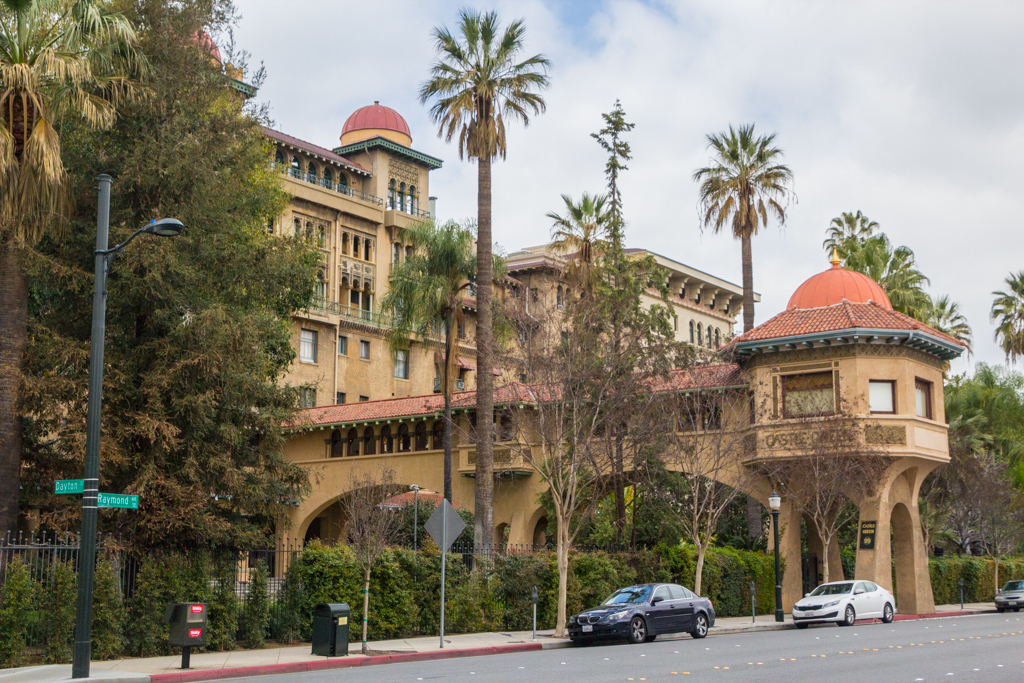
We walked north on Raymond Avenue
from LGO, looking for a bookstore. I love the architecture of the Castle
Green, a popular hotel for railroad travelers in the day.
Frederick I. Roehrig blended domes, arches, pillars, balconies, and
verandahs in a building of structural steel with brick walls and
concrete floors, making it Pasadena’s first fireproof building. He tied
it to the first part of the hotel complex, built on the east side of
the street, by an ornate enclosed bridge crossing Raymond Avenue. When
the Annex opened for business, its two cylindrical towers on the south
and much of the roof line were illuminated with exterior lights. There
was even a penthouse garden with a glass roof.
The Hotel Green became the social center of Pasadena, playing host to
vacationing tycoons and even presidents. It was also home to both the
Tournament of Roses and the Valley Hunt Club.
At the end of the resort era, the west annex was purchased by a group
of regular hotel guests who wished to continue to come to the Hotel
Green. In 1924 the group of investors divided the hotel complex into
three parts. The Central Annex was divided into fifty individually
owned units and so it remains today, renamed the Castle Green.
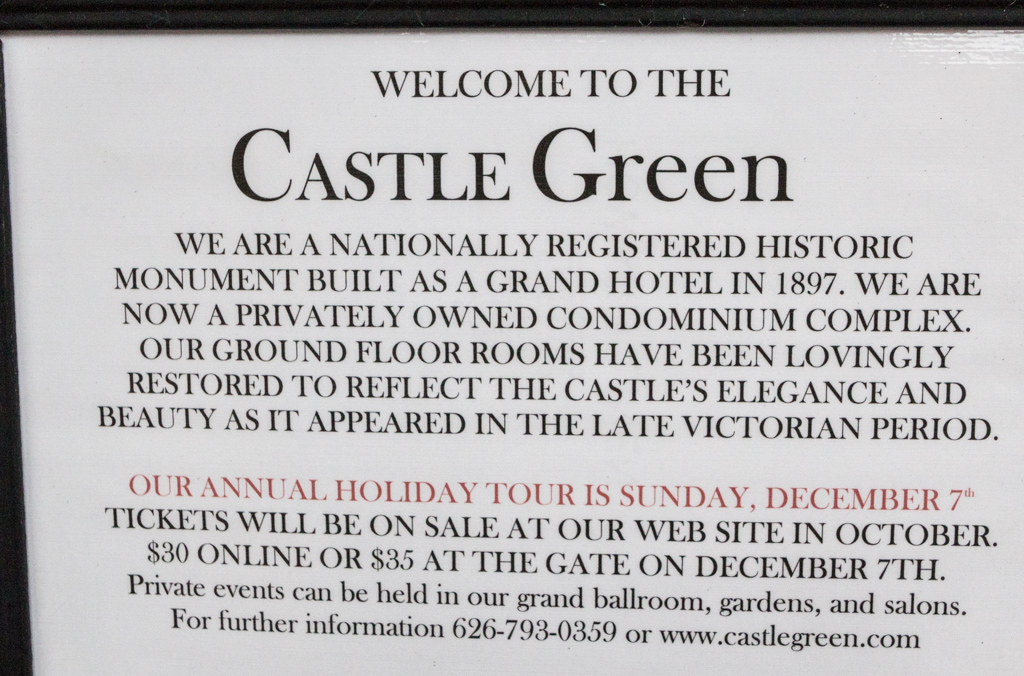
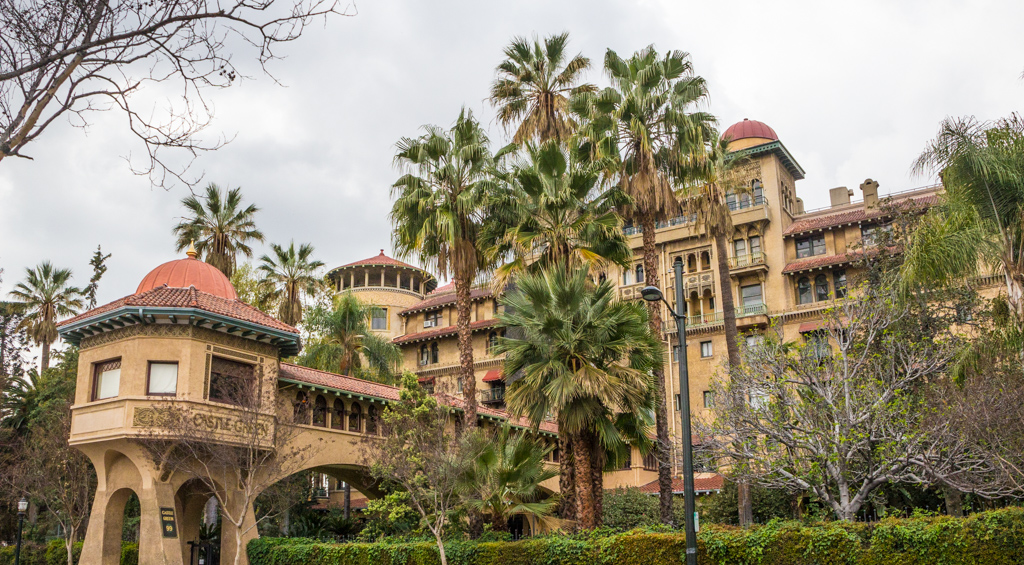 The Castle Green is an imposing seven story Moorish Colonial and
Spanish style building sitting next to Central Park in Old Pasadena at
Raymond and Green Street.
The Castle Green is an imposing seven story Moorish Colonial and
Spanish style building sitting next to Central Park in Old Pasadena at
Raymond and Green Street.
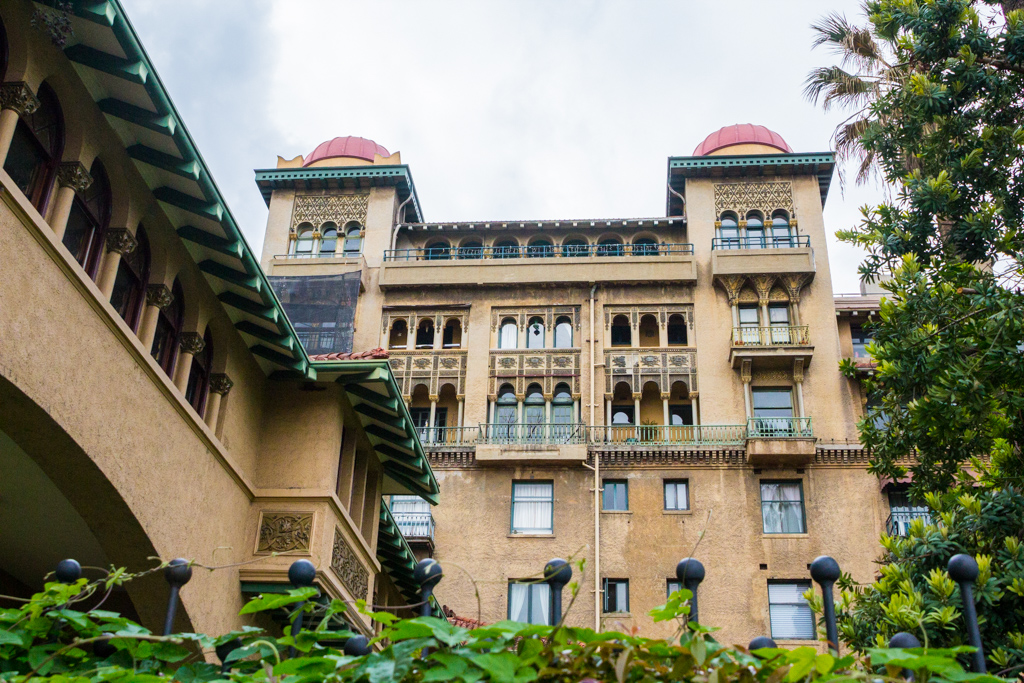
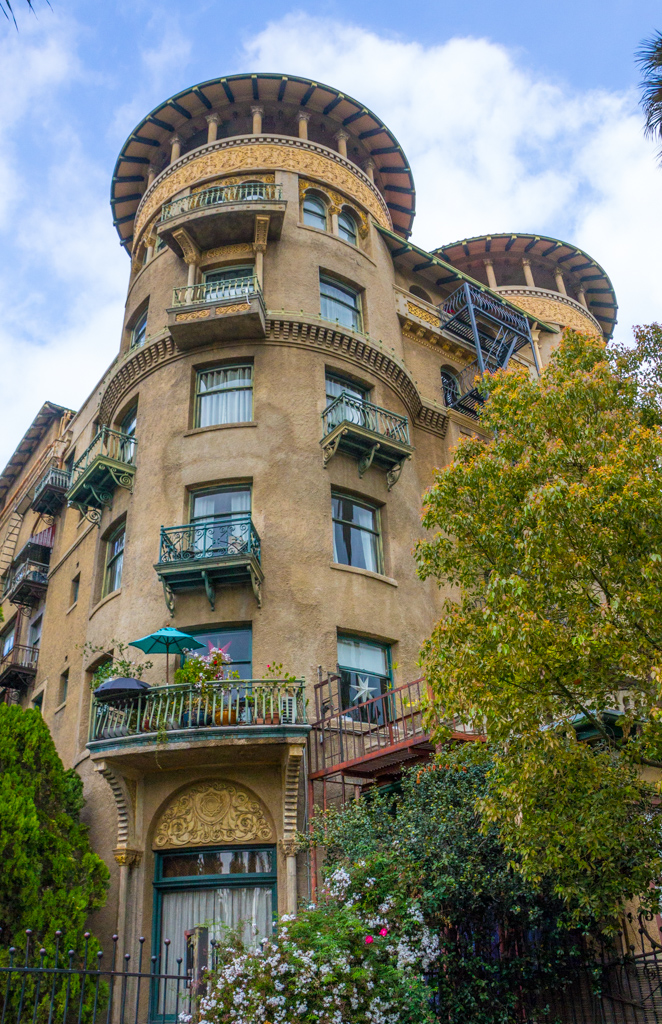 The Castle Green, opened in 1899 as the second of three buildings
in the Hotel Green complex, was a lavish resort for easterners and
others escaping winter rigors.
The Castle Green, opened in 1899 as the second of three buildings
in the Hotel Green complex, was a lavish resort for easterners and
others escaping winter rigors.
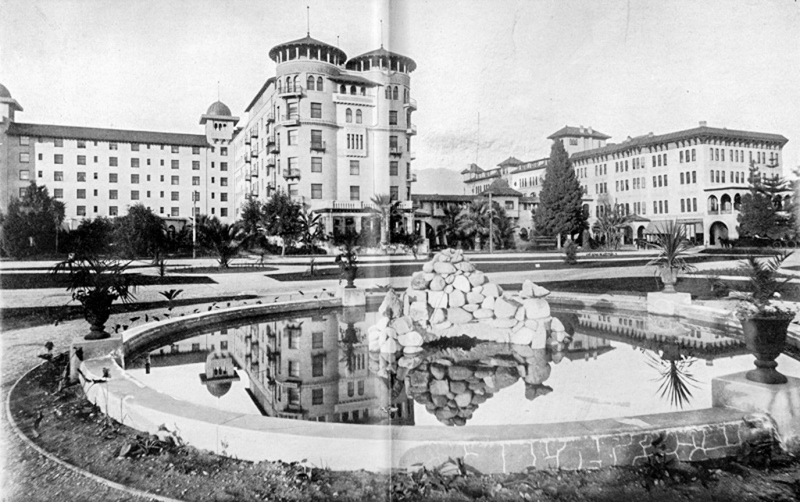
In 1887 one Mr. E. C. Webster began
construction of a hotel on the southeast corner of Raymond Avenue and
Kansas Street (1929 Green St.) When he was unable to complete the job,
a newcomer to the area, Colonel G. G. Green, took over the construction
and finished the Green Hotel, which opened in 1888.
Green was a friend of Mr. Andrew McNally, a prominent printer from
Chicago who had moved West and made his home in Altadena. McNally had
invited Green to come out and join him in this new community. Together
Green and McNally invested heavily in the short-lived Altadena
Railroad, which provided them private sidings at their residences and
which Green rode daily to the construction site of his new hotel. Green
and Andrew McNally were next door neighbors on Mariposa Street just
west of Lake Ave. The McNally home still stands and the old Green
Carriage house remains and can be seen from the rear parking lot of the
Altadena Library, which stands where the Green house stood. The old
Green carriage house is currently occupied as a residence.
The new Green Hotel was a mammoth 6-story edifice that faced Central
Park on South Raymond, just north of the original Victorian Pasadena
Train Station, where trains stopped on their way between Chicago and
Los Angeles. That station was replaced by the current station, in the
Southwestern style.
In 1898, Green built an even more impressive Mediterranean style hotel
on the opposite side of Raymond. The first became referred to as the
annex, and the second became the winter home for some of the most
prominent magnates of industry in the Eastern United States. The two
buildings were connected by a bridge across Raymond, and a tunnel under
it. Guests arriving by train would pass through the annex, to the
second floor, and be trammed across the bridge. In the main residence
they would simply retire to their suites. The luggage would follow via
the tunnel.
Many of the servants and attendants of the guests were forced to find
quartering in the adjacent buildings. In 1902 the Green had a wing
built along Kansas (now Green Street) to the P. G. Wooster Block, home
of Throop University, (forerunner to Caltech). This was all run as the
Hotel Green.
In 1924 the Hotel converted to all residential apartments. The original
building (annex) was razed to its first floor. All that is left of that
original hotel is a portico on the corner of Raymond and Green. The
building is now owned by Stats Floral Supply. In 1970 the government's
HUD project acquired the 1902 wing and separated the buildings into the
Green Hotel on Green and the Castle Green on Raymond.
From:
http://www.castlegreen.com/about-the-castle-green/
We took Metro back to LAUS and had
so much time before our 3 pm Amtrak back to Fullerton that we decided
to take Metrolink instead. My Amtrak Senior ticket to get to LA
was $10.20, my Metrolink ticket to get back to Fullerton was only $4.25.
Our day of taking the train to Pasadena from Fullerton for lunch had
been a great success.
